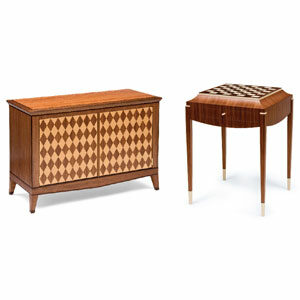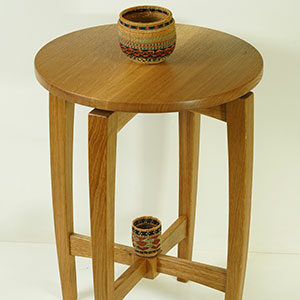All About Legs, Feet, and Bases

The foundation of any piece of furniture is the base on which it rests. In addition to providing structural support, the base will set the tone for the design. Whether you’re constructing feet or legs, there are a number of options to consider:
The Basics:
• The base sets the tone: Varying the style of the base can transform the style of a simple box from Shaker to Queen Anne.
• Furniture with legs: Cabriole or tapered? Furniture legs vary greatly in complexity and style.
• Resting on feet: Choose from a variety of vertical-grain or horizontal-grain construction techniques.
The base sets the tone
Choose a base that fits the design. A chest of drawers, a table, or a chair can take on any number of personalities depending on the design and construction of its base. A simple dovetailed box can be transformed into a Queen Anne-style or a Shaker-style chest of drawers, and a tabletop can take on a Danish Modern or Colonial style simply by the design of the base. Above all, it is important that the design applied to a base is carried out in the other elements of the piece.
Furniture with legs
Providing reliable support may be the most fundamental requirement demanded of a leg, but deciding on an appropriate form and shape requires a reasoned understanding of the function and style of the furniture piece it will support. The variety of legs is virtually endless, both from stylistic and construction standpoints. Legs often provide the opportunity to employ specialty woodworking skills such as inlay, common to Federal period furniture, or carving and turning, which are both required when making an a ball-and-claw cabriole leg for a Chippendale chair.
Resting on feet
Feet are generally used on furniture pieces that sit low to the ground, such as chests of drawers and sideboards. There are two basic construction methods, one using horizontal-grain lumber, the other vertical-grain lumber. Bracket feet are cut from blanks with horizontal grain and are mitered at the front. They vary in style and in complexity. They can be molded or unmolded and feature different cut-out patterns. The most complex is the ogee bracket foot, commonly used in period furniture. Alternatively, feet can be made from vertical-grain lumber, also in a wide array of styles. Vertical-grain feet can also incorporate specialty woodworking skills, such as carving (ball-and-claw foot) or turning on the lathe (bun foot).
Fine Woodworking Recommended Products

Festool DF 500 Q-Set Domino Joiner

Stanley Powerlock 16-ft. tape measure























Log in or create an account to post a comment.
Sign up Log in